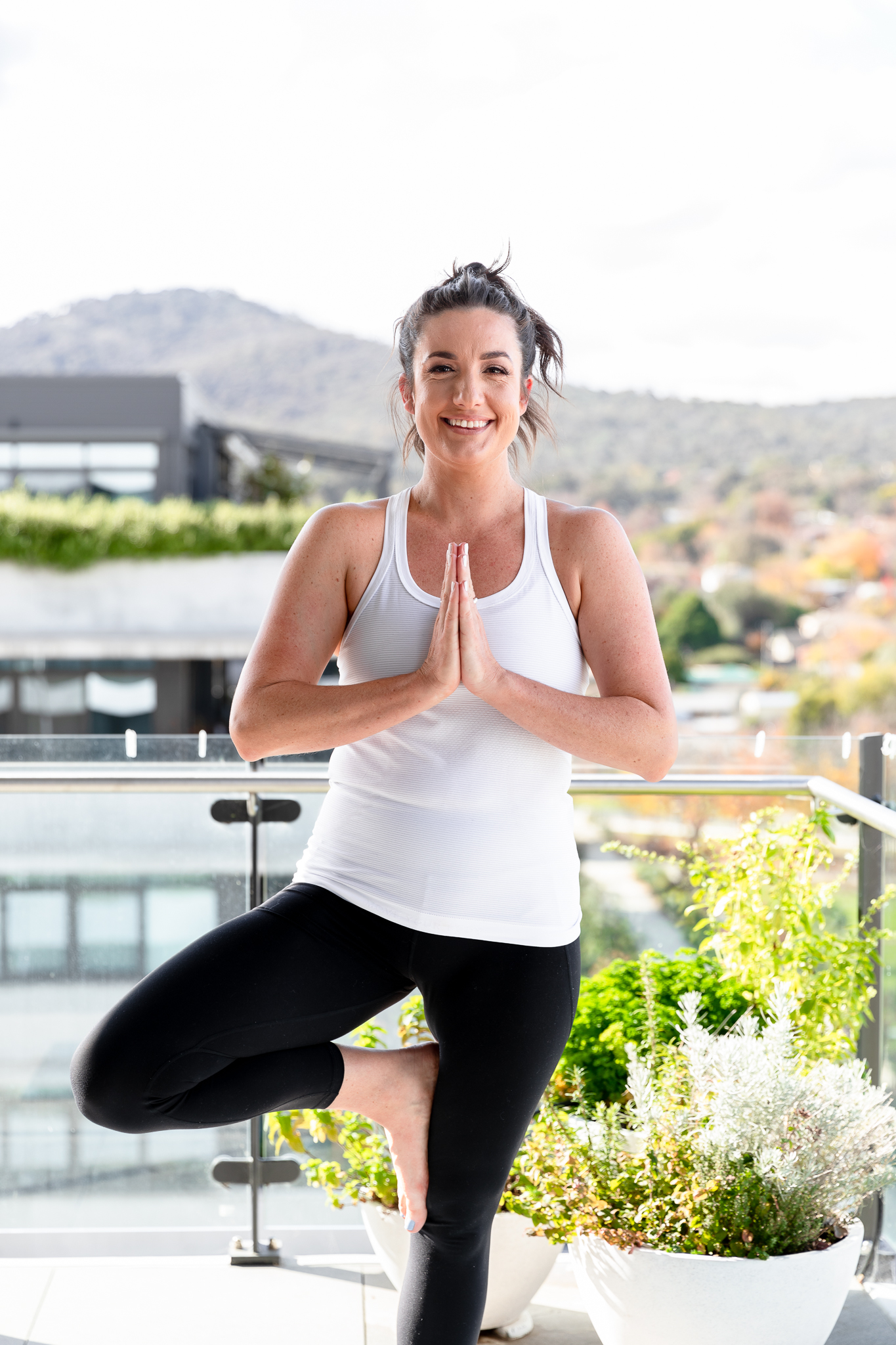Simple Mind-body connection exercises
Following on from last week I wanted you to dive a little deeper into internal self care practices
As discussed last week, you can read it here, when we talk about practices for reducing stress the aim is not to be calm all the time. It is about regulating your nervous system and building resilience. So the next time you’re faced with a stressful situation your ability to deal with it improves.
Breathwork
There are many types of breathwork here are a few to try. Use what feels good for you:
Diaphragmatic breathing (aka belly breathing) – Diaphragmatic breathing, also known as belly breathing or deep breathing, is a relaxation technique that involves breathing deeply into your diaphragm rather than shallowly into your chest.
- Sit or lie down in a comfortable position.
- Place one hand on your chest and the other on your abdomen to feel the movement.
- Slowly inhale through your nose, allowing your abdomen to expand as you breathe in. Focus on filling your lungs from the bottom up, so your abdomen rises first, then your chest.
- Exhale slowly through your mouth, pushing out as much air as you can while keeping your abdomen relaxed.
- Feel your abdomen naturally fall as you exhale.
- Continue this deep breathing pattern for several minutes, focusing on the rhythm of your breath and the sensation of your abdomen rising and falling.
Breath Focus technique – The Breath Focus technique, also known as mindful breathing or breath meditation, is a simple yet powerful relaxation method that involves focusing your attention on your breath. Simply focus on a word or image that calms you. For example your favourite beach, the waves breaking or the word ‘peace’ imagining the stress releasing from your body on your exhale.
Equal breathing or box breathing – Equal breathing, also known as square breathing or box breathing, is a breathing technique that involves inhaling, holding the breath, exhaling, and holding the breath again, all for an equal count of time. Here’s how to practise it:
- Inhale for 4 seconds
- Hold breathe for 4 seconds
- Exhale for 4 seconds
- Hold for 4 seconds
- Repeat 4-10 times
The 4-7-8 technique or Relaxing Breath – Involves inhaling for four seconds, holding for seven seconds, and exhaling for eight seconds. It promotes relaxation and reduces stress and anxiety.
These can help calm your nervous system, reduce stress and anxiety, and promote a sense of balance and relaxation. These techniques can be done anywhere, whenever you need to find a moment of peace and calm in your day.
Yoga
Yoga is a holistic practice that combines physical postures, breath control, meditation, and relaxation techniques to promote overall health and well-being. The philosophy of yoga focuses on growing spirituality, regulating emotions and thoughts.
Research has shown that yoga can enhance muscular strength & body flexibility, reduce stress, anxiety and depression, reduce chronic pain, improve sleep and enhance quality of life
Here are a few yoga instructors you can find on youtube to practise from your living room. I’ve included a range of types.
Youtube yoga channels
Yoga With Adriene – yoga accessible to beginners
Yoga With Kassandra – for yin yoga
Sjana Elise Earp – for experienced yogis looking for a burn
Tara Stiles – prenatal and yoga to get the kids involved
Yoga with Tim – Vinyasa yoga
Edyn Loves Life’s – has a beautiful series for plus size bodies
Progressive muscle relaxation (PMR)
Involves systematically tensing and then relaxing different muscle groups in your body. Starting at the forehead and moving down the body, holding/tensing each group for 15 seconds, then slowly releasing for 30 seconds before moving onto the next muscle group. By focusing on each muscle group, tensing and releasing tension, PMR helps reduce overall muscle tension and promotes relaxation.
Meditation
Meditation is a mental practice that involves focusing your attention and awareness on the present moment, with the goal of achieving a state of calmness, clarity, and inner peace. Meditation has been associated with numerous physical, mental, and emotional benefits.
Research suggests that regular meditation practice can reduce stress, anxiety, and depression, improve focus and attention, enhance emotional regulation, promote relaxation, and increase overall well-being.
Meditation can be practiced anywhere, anytime, and does not require any special equipment or training. All you need is a quiet space where you can sit comfortably and focus your attention inward. For beginners there are plenty of great apps offering guided meditations, I’ve listed a few below:
Meditation apps
Headspace – Free trial, then paid plan
Calm – Free trial, then paid plan
Smiling mind – Free
Insight timer – Free
Balance – Free trial, then paid plan
Positive affect Journalling
Positive affect journaling is a practice that involves regularly writing down positive experiences, emotions, and thoughts as a way to cultivate gratitude, happiness, and overall well-being.
Here’s how to do it:
- Set aside a few minutes daily.
- Reflect on positive experiences.
- Write them down in detail.
- Focus on associated emotions.
- Cultivate gratitude
- Make it a consistent habit.
Positive affect journaling can help boost mood, reduce stress, and increase overall happiness and life satisfaction. By focusing on the positive aspects of your life and expressing gratitude for them, you can cultivate a more optimistic outlook and enhance your overall quality of life.
Guided imagery
Guided imagery involves actively engaging the imagination to create a vivid sensory experience. This type of mind-body exercises might be a preferred option to meditation if you find it hard to quiet the mind. It has been shown to reduce work related stress, reduce anxiety and enhance the immune system.
To experience guided imagery, picture a relaxing or healing place (this can be somewhere known to you, or something generic like a forest).
- Immerse yourself in the imagery by using all of your senses to make the imagery as vivid as possible.
- Imagine the sights, sounds, smells, textures, and even tastes associated with your chosen scene.
- Focus on the feelings of relaxation and calmness that it evokes. Allow yourself to let go of any tension or stress you may be holding onto.
- Stay present in the moment and continue to deepen your experience of the guided imagery for several minutes, letting yourself fully engage with the scene and its calming effects.
- Transition back when you’re ready to end the guided imagery session, slowly transition back to the present moment by gently opening your eyes and taking a few deep breaths.
Mindfulness
Mindfulness is a mental practice that involves being fully present and engaged in the current moment, without judgement or attachment to thoughts or emotions. It’s about cultivating awareness of your thoughts, feelings, bodily sensations, and surroundings, as well as accepting them without trying to change them.
Practising mindfulness doesn’t have to be limited to meditation. You can incorporate mindfulness into everyday activities such as eating, walking, or even washing dishes by paying full attention to the experience.
Research has shown that regular mindfulness practice can lead to numerous benefits, including reduced stress, improved focus and attention, enhanced emotional regulation, and greater overall well-being.
Get started with mind-body connections today
Try different forms of mind-body connection from the list above and see what feels good for you. The more you include these practices in your week the more benefits you will feel.
If this has got you thinking more about your health and would like 1:1 guidance then I’m here to help. You can book a free 15min call to see if we’re a good match or jump right in and book an initial consultation here.
If you want to be kept in the loop when new articles are released sign up to my newsletter
As always, we are aiming for progress, not perfection and small sustainable changes.
ABOUT MELANIE LANSDOWN
I'm an accredited Nutritionist based in Canberra, Australia.
My purpose is to help women take control of their health, through realistic changes, education, and getting them living their best life.
FOLLOW
Medical disclaimer
The information found on melanielansdown.com.au or any of its media platforms is intended for informational and educational purposes only. Any statements made on these platforms are not intended to diagnose, cure, treat or prevent any disease or illness. Please consult with your medical practitioner before making any changes to your current diet and lifestyle.
© 2010 Melanie Lansdown Pty Ltd | Terms and Conditions | Privacy Policy
Acknowledgement
I acknowledge the First Nation's people of Country throughout Australia, especially the traditional owners of the land on which I work and teach, the Ngunnawal people. I pay my respects to their Elders, past, present and emerging. I am grateful for their continuing leadership in connection to Country for more than 60,000 years. I wish to acknowledge that this is land that has not been ceded and will always be their land.




